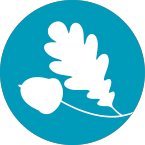Geography
Intent
At Merrylands Primary School and Nursery, we foster the curiosity children have for the world around them. We aim to develop children’s interest and awareness of diverse places, people, resources as well as the natural and human environments, together with a deeper understanding of the Earth’s key physical and human processes.
The geography curriculum has been designed to develop children’s geographical understanding while giving them opportunities to explore their local area, countries, continents and the wider world. They will be able to conduct field work, experiment with compasses, explore atlases, use maps, compare images/videos and experience other cultures that differ from their own through immersive experiences. Children will develop knowledge and skills that are transferable to other curriculum areas which are also used to promote their spiritual, moral, social and cultural development and, in turn, will provide children with an awareness of career opportunities related to geography both locally and in the wider world.
Implementation
Our geography curriculum is carefully pieced together to ensure children have quality first teaching which covers the core four units in geography: locational knowledge, place knowledge, physical and human geography and geographical skills and fieldwork. To ensure high standards of learning in EYFS, children are taught geography through cross-curricular opportunities and the skills taught are in line with the Early Years Framework, ‘Understanding the World’.
Geography for Year 1 through to Year 6 covers all aspects of the Geography National Curriculum and connections are made with history to ensure pupils have a rich knowledge of the humanities and can make educated links between the two subjects.
Teaching of geography follows our bespoke geography long term plan which explicitly shows the progression of key knowledge and skills. Knowledge goals are progressive to build on the children’s prior knowledge each year. Each unit of work draws upon a ‘Big Question’ which is introduced at the start of the unit and all learning focuses around answering the question at the end of the unit.
Teachers have access to a range of resources which they use to aid teaching and learning and make geography accessible for all learners. Geography is rich with vocabulary which is modelled by teachers throughout lessons and children are encouraged to use this vocabulary in their spoken and written work.
In Key Stage 1, children will develop knowledge of their local area and compare this to a contrasting non-European country, explore the 7 continents of the world and identify countries and capital cities. They will also become familiar with seasonal weather and be able to link this to the equator and both the North and South Pole.
In Key Stage 2, the children’s prior knowledge is built upon where they fulfil their curiosity for the wider world. They focus on environmental regions, key aspects of human and physical geography and learn about topographical features including hills, mountains, coasts and rivers. They will understand the significance of longitude and latitude and use compasses. They will also measure, record and present human and physical features in different ways, such as sketch maps, plans, graphs and digital technology.
Impact
As a school, we ensure that children are equipped with a high level of geographical knowledge and skills to prepare them for their next step of education. They will be able to make links between real life events and how the world around them has been shaped by nature and human actions as well as how the world continues to change. They will be able to speak confidently about diverse places, people, resources and the environment.
Geography knowledge goals are assessed throughout each unit of work using the Merrylands assessment grid and this information is used to inform future planning. The subject is monitored regularly to measure the impact of the geography curriculum content, design and delivery and the outcomes of this monitoring are used to drive forward next steps within the subject.
